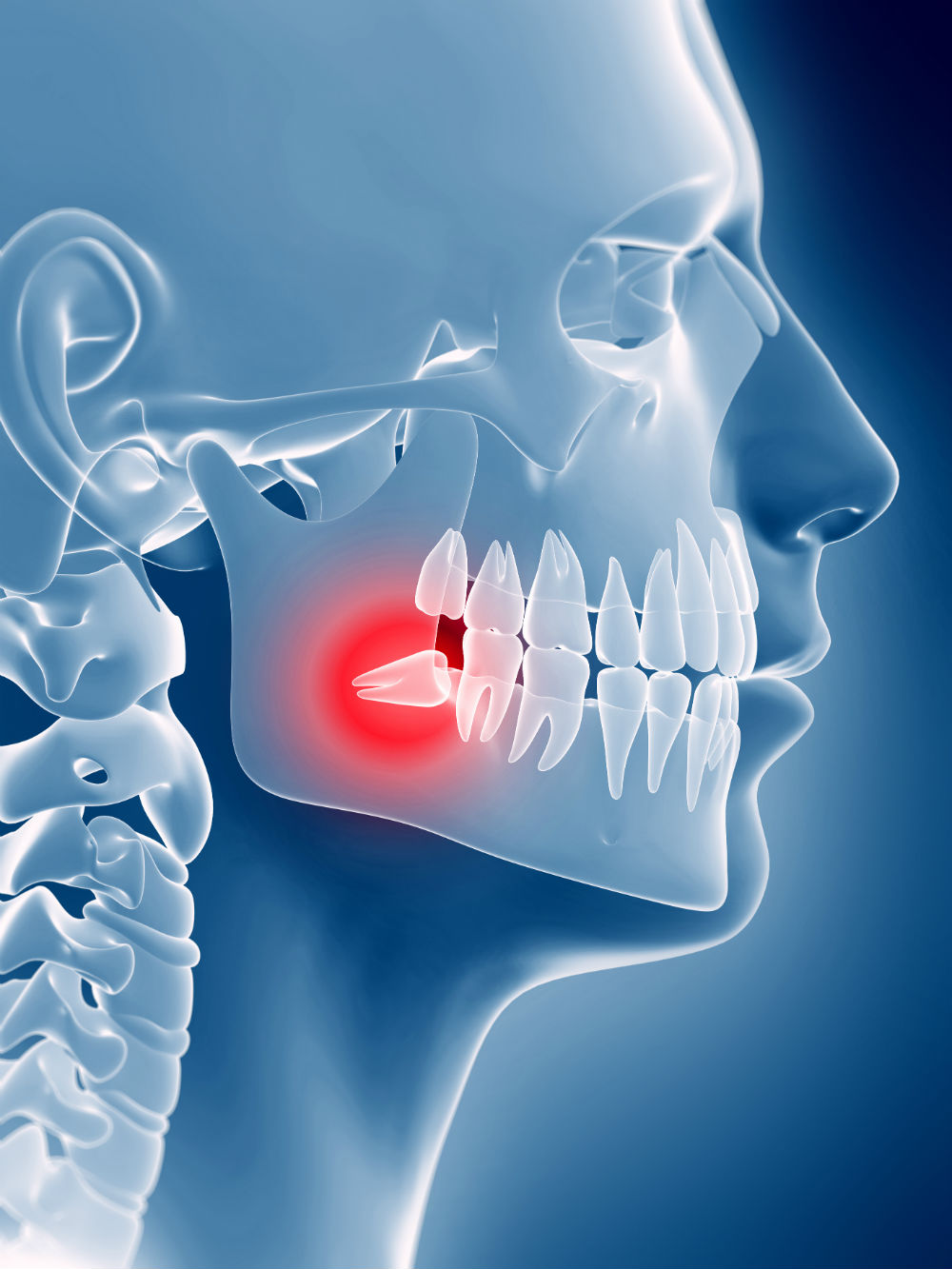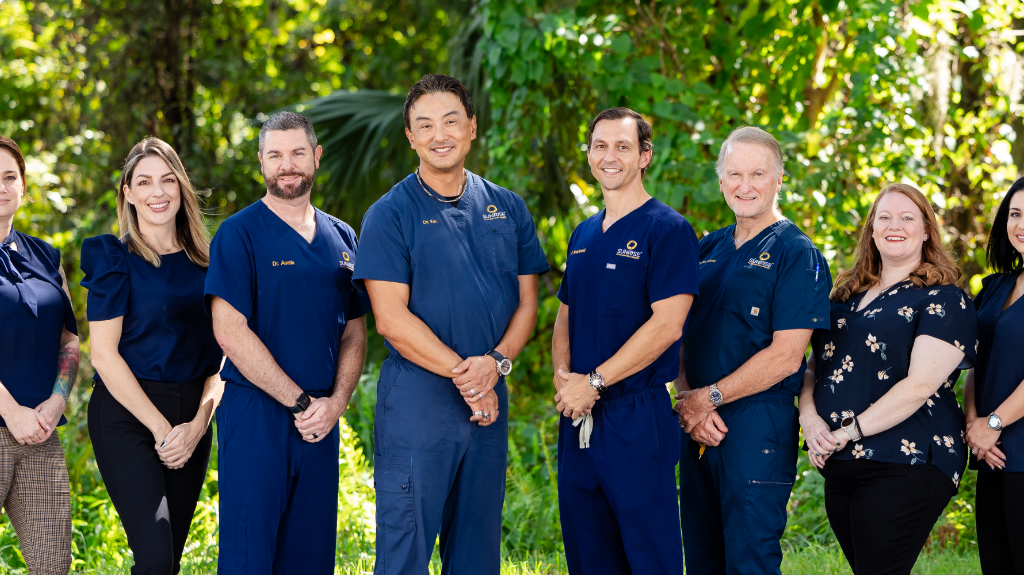This Article Has Been Medically Approved By


Not many of us have ever heard of a sinus lift, but it is much more common than you might think. Even though it sounds like some kind of plastic surgery, it is, in fact, a dental procedure. While the words may sound intimidating, it is vital to understand what a sinus lift is so that people don’t overlook a procedure that could be beneficial to their oral and overall health.
It’s important to note that a sinus lift is a grafting procedure (this procedure may also be called a sinus augmentation procedure). This grafting procedure, in particular, is designed to make more room in the back, upper jaw area of the mouth. Over time, if there is a lack of teeth in this space, the bone mass can face a major reduction in volume, making the sinuses more susceptible to sag and making the likelihood of a successful implant fail.
WHY WOULD I NEED A SINUS LIFT?
There are a few specific reasons why an Oral Surgeon may suggest a dental sinus lift procedure. Examples include:
- The bone height of the upper jaw is too short
- Bone loss due to cancer treatments or age
- The sinuses are too close to the jaw itself
- Dental implants need to be placed and room must be made
Why would people have these anomalies with their jaw in the first place?
- Some people may have lost a few of the teeth in their upper jaw. When people lose their teeth, bone is absorbed back into the body in the form of calcium. Often, these missing teeth are the molars. This absorption takes place because the body feels that, without the teeth, the calcium can be better used elsewhere. This leads to the loss of vital bone mass in the jaw. In this case, some of the bone of the jaw may be lost and more bone is needed before implants can be placed.
- Bone, gum, or periodontal disease may have caused a decrease in the bone density of the jaw itself.
BENEFITS OF A SINUS LIFT
Being told you need a sinus lift before getting tooth implants may seem daunting, but there is no need to worry. It’s a relatively common surgical procedure that can make it possible for you to have implants even after suffering bone loss. It’s a surgical procedure which grafts bone to the upper jaw at the position of the molar and premolar teeth. The maxillary sinus membrane is lifted upwards to make space for the additional bone. The sinus system has several parts but it’s the maxillary sinuses which sit closest to our teeth. You might sometimes get a toothache when you have congestion or a bad cold – this is because the pressure on the sinuses transfers to the tooth roots in the upper jaw.
· Repairs Gum Disease & Tooth Loss Damage
When gum disease goes untreated for an extensive period, the infection can cause the jawbone to deteriorate. Missing teeth will deplete essential root structures from the jawbone. Without a root to bind to, the bone can eventually be reabsorbed by the body. In both scenarios, the lost jawbone will cause the maxillary sinus cavity to shrink.
During a sinus lift, this missing bone material is replaced with a natural or synthetic graft. Once the graft is placed in the cavity, the maxillary sinus gains extra height. The graft will simultaneously stimulate natural bone production and allow you to replenish lost jaw material.
· Makes Dental Implants Possible
If you want to replace a missing tooth with a dental implant, you must have enough jawbone available to support the prosthetic root structure. However, if there’s not enough bone and the sinus rests too close to the mouth, the dental implant will not take hold.
When new bone is added to the cavity during a sinus lift, Oral Surgeons may be able to insert the dental implant at the same time. If additional bone growth is required, most receive their implants within nine months after the initial surgery.
· Reduces Risk of Sinus Damage
If the maxillary sinus wall is too thin or too close to the upper mouth, inserting an implant may injure the cavity and cause a series of complications. With a sinus lift, the cavity gains extra space, making it possible for implants to be safely inserted.
HOW IS A SINUS LIFT PERFORMED?
In this procedure, people will meet with their Oral Surgeon prior to the day of the surgery. The risks and the benefits will be discussed, and individuals will be given the opportunity to ask any questions that they might have. It is important to review all the options before making a decision.
The sinus lift procedure is pretty straightforward and safe. The procedure generally takes place in an Oral Surgeon’s office. The procedure can take anywhere between 30-45 minutes. On the day of the procedure, here is how it will go:
The surgeon will make an incision along the gum line in the area where the rear teeth used to live. Once the incision is made, the tissue is lifted from the surface. This will expose the surface of the bone.
The Oral Surgeon will use a special tool to make a small, round window in the bone itself. This window will give the surgeon a clear view of the sinus. Then the membrane of the jaw is gently moved up and out of the way of the jaw bone itself.
The Oral Surgeon lifts the sinus tissue away during the surgery, so that there is space for him to insert a bone graft. The bone can come from your own body, a donor or it can be synthetic. In our practice, we draw 2 tubes of the patient’s own blood and spin it down in our lab, separating the patient’s own platelet rich plasma, which has all of the patient’s own growth and healing factors. We are “making the donor bone more like a part of you”.
After the graft material has been placed, the tissue itself will be closed with a few stitches. Then, the bone is given time to heal.
You can call our office and schedule a consultation and Dr. Schmid and Dr. Kim can answers your questions and discuss to see if you are a candidate for this procedure. Call our Melbourne office at 321.725.5377 or Suntree at 321.255.7724 (Rockledge).
RECOVERY
Immediately after your surgery you may experience swelling in the area and bleeding from your mouth or nose. You’ll probably feel uncomfortable for a few days afterwards, but most patients don’t experience major discomfort. If any bleeding continues for more than two days, or pain and swelling get worse, you should contact your Oral Surgeon immediately.
There is a risk of the sinuses becoming infected, but your Oral Surgeon will give you medication to protect against this. You’ll have to be careful not to sneeze or blow your nose heavily since this can move the bone graft material or dislodge your stitches.
After 7-10 days you’ll return to your Oral Surgeon so he can check the progress of your healing and remove your stitches, if they haven’t dissolved by themselves. You’ll have several more visits during the healing process to check everything is going as planned.
AFTERCARE OF A SINUS LIFT

Do not blow your nose or sneeze holding your nose. Sneeze with your mouth open. Do not drink with straws and do not spit. Avoid bending over and lifting heavy objects. Scuba diving and flying in pressurized aircraft may also increase sinus pressure and should be avoided. Decongestants such as Drixoral, Dimetapp, or Sudafed will help reduce pressure in the sinuses. You may also be given a prescription for antibiotics.
· Smoking
Do not smoke for at least two weeks after surgery, if at all. As discussed at your consultation, smoking dramatically increases the risk of bone graft and sinus augmentation failure. Also decreases blood flow to the area needed for healing.
· Oral Hygiene
Do not rinse or spit on the day of your surgery. This tends to disturb the blood clot, open the wound and can prolong bleeding and slow healing. You should not have a significant amount of blood in your mouth. Saliva can be swallowed, even if slightly blood tinged.
Keeping your mouth clean after surgery is essential to reduce the risk of infection. Start salt water rinses the day following your procedure. Use one-half teaspoon of salt dissolved in an 8 ounce glass of warm water and gently rinse with portions of the solution, taking five minutes to use the entire glassful. Repeat as often as you like, but at least four to five times daily and always after eating for the next five days.
Do not brush the teeth in the area of surgery for 24 hours. When brushing, be very gentle. When expectorating, also be gentle.
Doctors may prescribe an antibiotic rinse (Chlorhexadine, Periogard, Peridex) for certain procedures. This rinse should be used in the morning and at bedtime after brushing teeth. Do not eat or drink or rinse your mouth after using the medicated rinse. Using this rinse more than two times a day will cause staining of your teeth.
· Diet
Drink plenty of fluids. Avoid hot liquids and foods. Soft foods and liquids should be consumed on the day of surgery. Keep all solid food away from the surgical site.
· Pain
You should begin taking pain medication before the local anesthetic wearing off. For moderate pain, ibuprofen (Advil® or Motrin®) may be taken. Ibuprofen bought over the counter comes in 200 mg tablets: 3–4 tablets may be taken every 6–8 hours as needed for pain (no more than 3200 mg/24-hour period). For severe pain, the prescribed medication should be taken as directed. Do not take any of the above medication if you are allergic or have been instructed by your doctor not to take it. This may include patients with liver or kidney disease.
· Antibiotics
Be sure to take the prescribed antibiotics as directed to help prevent infection.
· Activity
Keep physical activities to a minimum immediately following surgery. If you are exercising, throbbing or bleeding may occur. If this occurs, you should discontinue exercising. Keep in mind that you are probably not taking normal nourishment. This may weaken you and further limit your ability to exercise.
· Bleeding
Some bleeding or redness in the saliva is normal for 24 hours. If you have excessive bleeding (your mouth fills up rapidly with blood) it can be controlled by biting on a gauze pad placed directly on the bleeding wound for 30 minutes, use as little pressure as is needed. Change the gauze pad every 30 minutes as needed. If excessive bleeding continues, please call for further instructions. You can remove gauze when it is no longer needed.
· Swelling
Swelling is a normal occurrence after surgery. To minimize swelling, apply an ice bag (or a plastic bag or towel filled with ice) on the cheek in the area of surgery. Apply the ice continuously, as much as possible, for the first 48 hours. Swelling generally reaches a peak in 48–72 hours and then subsides over the next 3–5 days. . If swelling begins to increase after the third post-operative day, please contact your doctor immediately.
SCHEDULE A CONSULTATION

To see if you are a candidate for this procedure, call our office and schedule with Dr. Schmid or Dr. Kim. You can also request a consultation online by clicking here. We have two convenient locations, Melbourne 321.725.5377 or Suntree (Rockledge) 321.255.7724.



